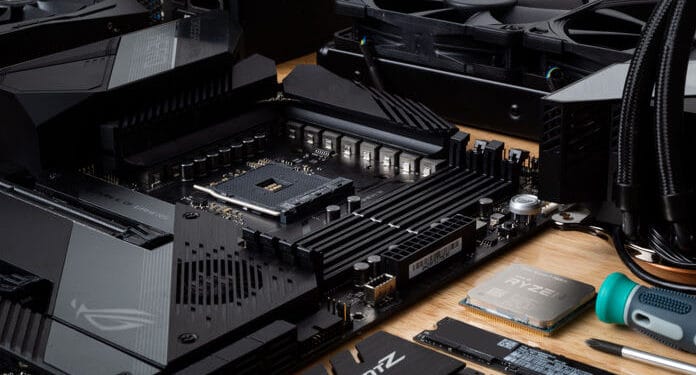A motherboard is a PCB or Printed Circuit Board that holds together electronic components of a computer such as CPU, memory, connectors for input/output and expansion cards. It also provides power to these electronic components.
Every motherboard is different and the features offered will depend on the model and manufacturer. There are so many types of motherboards compatible with different kinds of CPUs. For example, there are many motherboards for Ryzen 9 5950x that you can buy from the market. Also, there are some Gaming Authorities motherboards that you can pick for your PC.
Some Standard Features Include:
- Chipset: This group of microchips acts as a controller for various system components. It provides an interface between the CPU, memory and peripheral devices.
- CPU Socket: This is where the CPU is inserted and connected to the motherboard.
- Memory Slots: These are used to insert RAM modules.
- Expansion Slots are used to insert expansion cards such as graphics cards and sound cards.
- Power Connectors: These connect the power supply to the motherboard.
- I/O Ports: These connect peripheral devices such as keyboards, mice and printers.
Why is The Motherboard So Important?
The motherboard is the main circuit board of a computer. It is also known as the mainboard, system board, or logic board. The motherboard connects all the parts of a computer. It is the central nervous system of a computer.
The motherboard has many essential components. These include the central processing unit (CPU), memory, expandable storage, input/output (I/O) ports, and peripheral devices. The motherboard also has slots for expansion cards.
The CPU is the brain of a computer. It consists of one or more microprocessors. Memory is stored on the motherboard. This includes RAM, ROM, and flash memory. Expandable storage is also connected to the motherboard. This includes hard drives, solid-state drives, and optical drives.
I/O ports are used to connect peripheral devices to a computer. These include keyboards, mice, printers, and scanners. Peripheral devices are not essential for a computer to function, but they allow users to interact with a computer.
Motherboards on laptops carry everything, but laptops don’t have more DIMM Slots. You can visit this recommended resource to find the most suitable laptops with perfect motherboards.
Do I Need a Particular Motherboard For Gaming?
No, you don’t need a particular motherboard for gaming. Any modern motherboard will work for gaming. However, some motherboards are better suited for gaming than others. Motherboards designed for gaming often have features that improve performance and make the experience more enjoyable.
Some of These Features Include:
Multi-GPU support: You can use multiple graphics cards on your computer. This is useful for gamers who want the best possible performance.
High-end audio: Gaming motherboards often have high-quality audio chips. This gives you better sound quality when gaming.
Fast storage: Gaming requires quick access to data. Motherboards designed for gaming often have brief storage options such as M.2 or U.2 ports.
Overclocking: This allows you to increase the clock speed of your CPU. This can give you a performance boost when gaming.
How To Choose a Motherboard For a Normal PC?
When choosing a motherboard for a normal PC, you should consider the following factors:
Size: Motherboards come in different sizes. The most common length is ATX. Other measures include microATX and mini-ITX.
Processor: You need to choose a motherboard that supports your CPU. Intel and AMD CPUs use different sockets.
Memory: You need to choose a motherboard that supports the type of memory you want to use. DDR3 and DDR4 are the most common types of memory.
Storage: You need to choose a motherboard that supports the type of storage you want to use. SATA is the most common type of storage.
Frequently Asked Questions
Why is The Motherboard Important?
The motherboard is an essential part of a computer. It is the main circuit board where all the other components of the computer are connected. The motherboard allows all the different computer parts to communicate with each other.
What are The Different Types of Motherboards?
There are three different types of motherboards: ATX, microATX, and mini-ITX.
What is an ATX Motherboard?
An ATX motherboard is the most common type of motherboard. It is 12 inches by 9.6 inches in size. Most desktop computers use an ATX motherboard.
What is a MicroATX motherboard?
A microATX motherboard is smaller than an ATX motherboard. It is 9.6 inches by 9.6 inches in size. Some small form factor desktop computers use a microATX motherboard.
Final Verdict
So, that was our article on everything you need to know about motherboards. We hope that it helped you understand this critical component of your computer better. Please ask us in the comments section below if you have any questions. And if you want to learn more about computers and other technology, be sure to check out our website.



